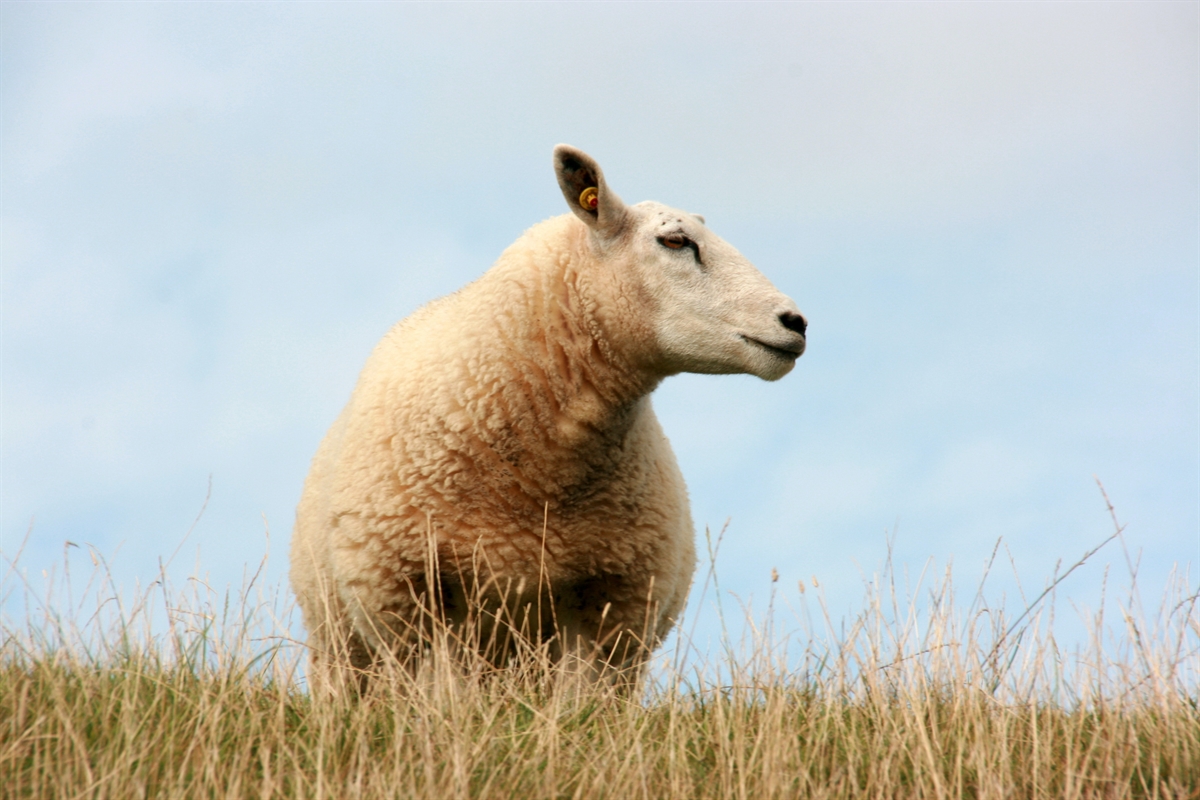Body Condition Scores: The importance of tip top condition at tupping

We bleat on about Body Condition Scoring (BCS) quite a bit here at Lamlac, but there’s a reason for that. When it comes to ensuring the productivity and profitability of your flock, having a handle on the condition of your ewes and rams is pretty vital. It’s a simple yet direct means of assessing the overall health of a sheep and its ability to successfully reproduce over the coming season - as well as keeping tabs on how adequate the diet is at each stage of the reproductive cycle.
It’s common knowledge that pre-lambing, ewes need to be at their optimum condition to ensure good birth weights of their lambs and that they can produce enough nutrition via their milk supply to raise their offspring to weaning. But why is BCS so important at tupping? Let’s take a look.
First things first, what is ‘prime condition’, and how do we measure it?
In short, Body Condition Scores are measured on a scale of 0 – 5, with 0 being poor condition and 5 being overweight. The ideal BCS for a ewe pre-tupping is 2.5 – 3.5. Find out more about how to condition score here >>>
So, why the emphasis on BCS at tupping?
Not only does Body Condition Scoring provide a clear indicator of the success of pre and post-weaning feeding and management of ewes, but also research has proven a direct link between the BCS of ewes and reproduction rates. These include scanning percentages, number of lambs born, number of lambs weaned and ovulation and conception rates.
It is recommended that 90% of your flock should be at optimum BCS at tupping in order to maximise flock performance. The best way to determine this is to give your whole flock a thorough MOT, approximately 8 weeks prior to tupping. Discover the four ‘T’s of a pre-tupping MOT here >>>
It’s also worth considering that the ewe’s follicles start developing 6 months prior to ovulation, with some suggestion that the impact of BCS on fertility starts at this time.
Source
What does poor condition at tupping mean for reproduction?
For under conditioned ewes, erratic heat cycles lead to fewer eggs produced and lower conception rates. Disease is also a more common occurrence due to inadequate nutrition to support a healthy immune system, which in turn leads to fewer lambs born or raised to maturity.
What does excess condition at tupping mean for reproduction?
The impact for ewes at the higher end of the BCS scale will be reduced fertility and delayed lambing, along with reduced production for their offspring and ultimately fewer lambs raised to maturity. This is despite a greater ovulation rate than in a lean ewe, as this is countered by an increased occurrence of embryonic death.
Changing body condition post-tupping
The impact of condition loss immediately post-tupping is equally as concerning as the ewe being in poor body condition at tupping. This is down to its impact on ovulation and embryo implantation, which occurs approximately 15 days after fertilisation. All things considered, maintaining a low stress environment, constant level of nutrition and BCS is essential during this vital stage of pregnancy.

What about the rams?
It’s well known throughout the sheep farming community that tupping takes it out of the boys, so it’s essential that the ram’s Body Condition Score is on point, prior to the start of the tupping season. The ideal body condition score for a ram is slightly higher than for the ewes, at a score of between 3.5 and 4, eight weeks before tupping is due to start. This is due to the weight loss they can experience during a 6-week tupping period - often around 15% of their original body weight.
It takes 6 – 8 weeks for spermatogenesis (sperm production) to occur. Therefore the quality of a ram’s semen at tupping is a direct reflection of the condition he was in approximately 7 weeks previously. With this in mind, encouraging a ram with a less than suitable BCS to get up to condition within this 8 week period can be very much a case of too little too late. (Source)
Excess weight in tups can reduce libido, resulting in reduced breeding efforts while poor BCS can result in reduced fertility and reduced interest in ewes.
Keeping your flock in perfect BCS ensures repeat breed-backs, increased occurrence of twinning and greater lambing percentages. (Source)

Preparation is essential
As with many things in life, it is clear that when it comes to tupping, preparation is key. Now that you understand the importance of the perfect Body Condition Score, you might want to check out our tips for preparing your flock for tupping here >>>
Tupping tips and more
For more tips on tupping and all things sheep farming and lambing related, follow us on Twitter, like us on Facebook or watch us on YouTube.